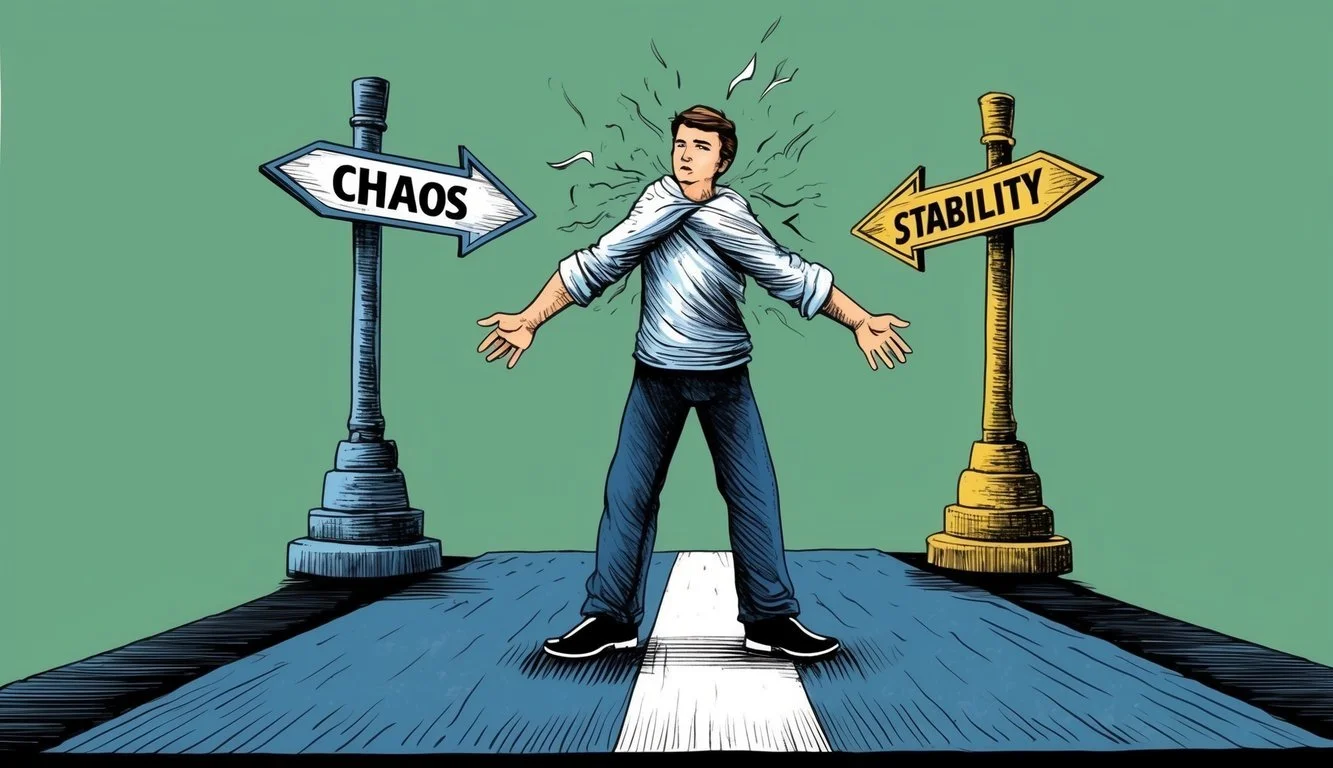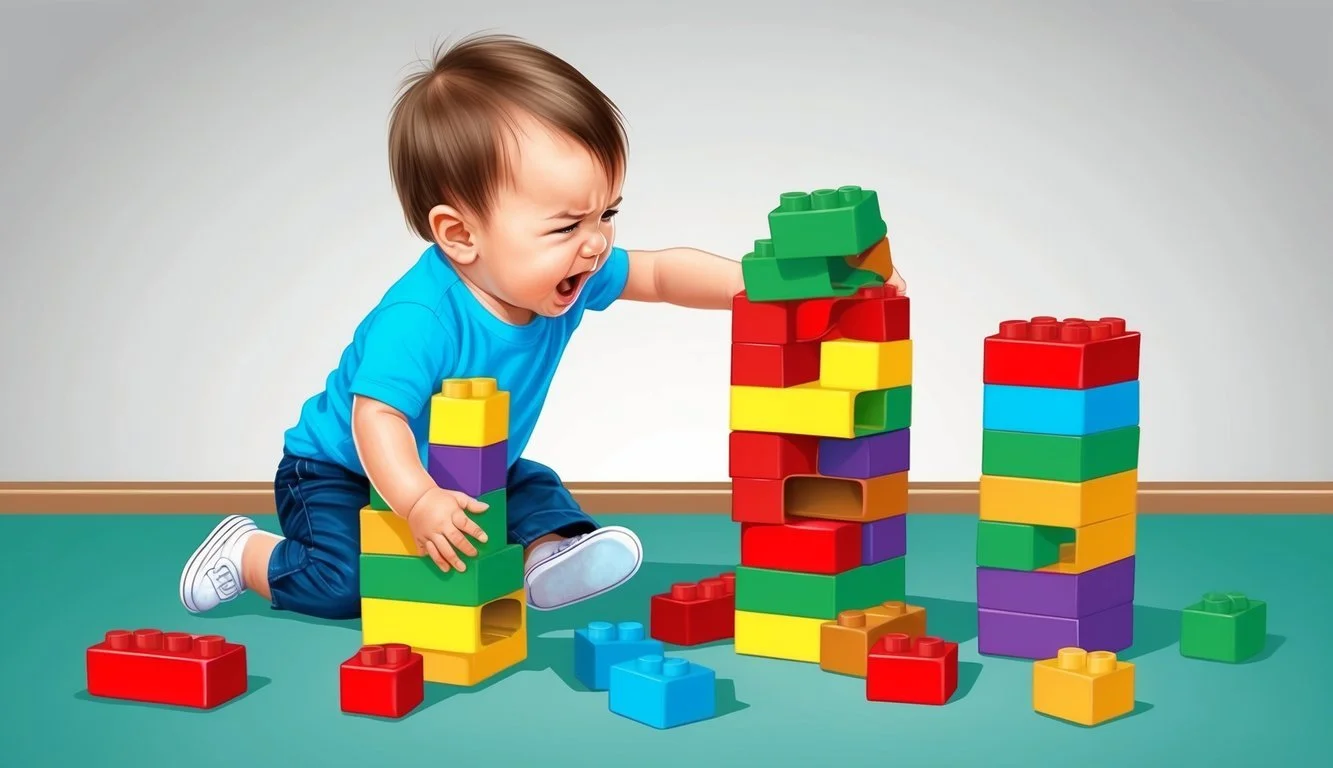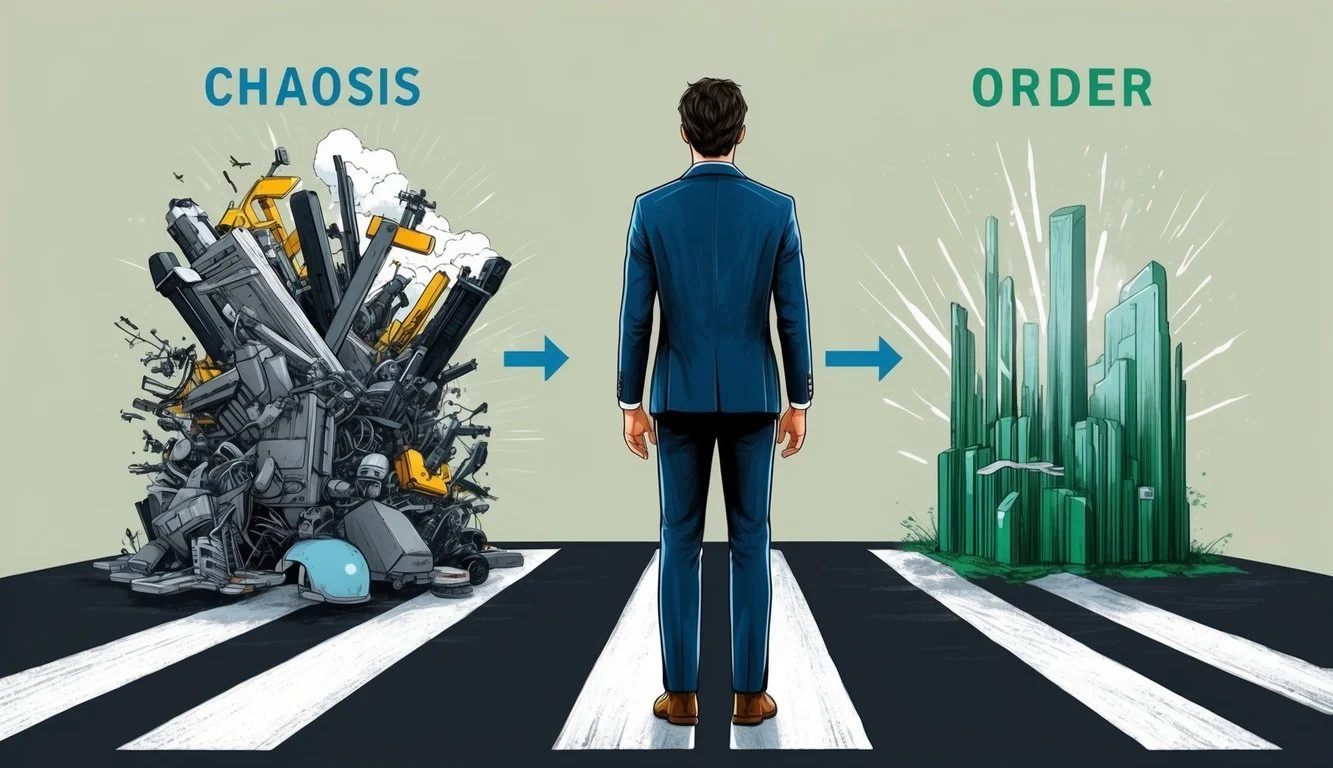Unpacking Impulsivity Causes: What Drives Hasty Decisions?
Impulsivity, characterized by hasty actions without forethought, can significantly impact a person's life. The causes of impulsive behavior are complex and multifaceted, involving both biological and environmental factors. The prefrontal cortex, a key region of the brain responsible for impulse control, plays a crucial role in regulating impulsive tendencies.
Various conditions can contribute to impulsivity, including attention deficit hyperactivity disorder (ADHD), bipolar disorder, and certain neurodegenerative diseases. Physical factors such as brain injuries or changes in brain chemistry can also lead to impulsive behaviors. Additionally, environmental influences and learned patterns of behavior may exacerbate impulsivity in some individuals.
Understanding the underlying causes of impulsivity is essential for developing effective treatment strategies. These may include medication, therapy, mindfulness exercises, and cognitive-behavioral techniques aimed at improving self-control and decision-making skills. By addressing the root causes of impulsivity, individuals can work towards better managing their impulses and improving their overall quality of life.
Defining Impulsivity
Impulsivity refers to the tendency to act quickly without adequate forethought or consideration of consequences. It involves rapid, unplanned reactions to internal or external stimuli.
Psychological Perspectives
Impulsivity is a complex psychological construct. It encompasses difficulties in self-control, lack of premeditation, and a preference for immediate gratification. Psychologists often view it as a trait that varies among individuals.
Some theories link impulsivity to deficits in executive functioning, particularly in the prefrontal cortex. This brain region plays a crucial role in decision-making, planning, and inhibiting inappropriate responses.
Neurotransmitters like serotonin and dopamine are also implicated in impulsive behaviors. Imbalances in these brain chemicals can affect an individual's ability to regulate impulses effectively.
Behavioral Aspects
Impulsive behaviors manifest in various ways. Common examples include:
Making hasty decisions without considering alternatives
Interrupting others in conversation
Acting on urges without regard for consequences
Difficulty waiting one's turn
These behaviors can occur across different contexts, from personal relationships to financial decisions. Impulsivity often leads to risk-taking behaviors, such as engaging in dangerous activities or making impulsive purchases.
In clinical settings, impulsivity is a key feature of several disorders, including ADHD and borderline personality disorder. It can significantly impact an individual's daily functioning and long-term well-being.
Neurobiological Underpinnings
The brain's complex structures and functions play a crucial role in impulsive behaviors. Specific regions, neurotransmitter systems, and genetic factors contribute to impulse control and decision-making processes.
Brain Structures and Functions
The prefrontal cortex is a key player in impulse control. This region is responsible for executive functions, including decision-making and behavioral inhibition. The anterior cingulate cortex also contributes to impulse regulation by monitoring conflicts between competing responses.
The nucleus accumbens, part of the brain's reward system, is involved in immediate gratification seeking. Dysfunction in this area can lead to increased impulsivity.
Neuroimaging studies have shown reduced activity in the prefrontal cortex and increased activity in the nucleus accumbens in individuals with high impulsivity. This imbalance may explain difficulties in resisting immediate rewards.
Neurotransmitter Systems
Dopamine plays a central role in impulsivity. This neurotransmitter is involved in reward processing and motivation. Elevated dopamine levels in the nucleus accumbens can increase impulsive behaviors.
Serotonin also influences impulse control. Lower serotonin activity is associated with increased impulsivity. This neurotransmitter helps regulate mood and behavior.
Norepinephrine affects attention and arousal. Imbalances in this system can lead to difficulties in focusing and increased impulsivity.
GABA, the brain's primary inhibitory neurotransmitter, helps regulate impulsive urges. Reduced GABA activity may result in decreased impulse control.
Genetic Factors
Genetic variations contribute to individual differences in impulsivity. Studies have identified several genes associated with impulsive traits.
The DRD4 gene, which codes for a dopamine receptor, has been linked to impulsivity. Certain variants of this gene are associated with higher levels of novelty-seeking and risk-taking behaviors.
Serotonin-related genes, such as the serotonin transporter gene (SLC6A4), also influence impulsivity. Variations in these genes can affect serotonin signaling and impulse control.
Genes involved in neurotransmitter metabolism, like COMT and MAOA, impact impulsivity levels. These genes affect the breakdown of dopamine and other neurotransmitters in the brain.
Environmental Factors
Environmental influences play a crucial role in shaping impulsive tendencies. External circumstances and experiences can significantly impact an individual's propensity for impulsive behavior.
Early Life Experiences
Childhood experiences profoundly affect impulsivity later in life. Exposure to trauma, neglect, or inconsistent parenting can increase impulsive tendencies. Children who grow up in chaotic or unpredictable environments may struggle to develop self-regulation skills.
Conversely, nurturing and structured upbringings can foster better impulse control. Consistent discipline, positive reinforcement, and emotional support help children learn to manage their impulses effectively.
Poverty and socioeconomic stress during childhood can also contribute to impulsivity. Limited resources and unstable living conditions may lead to more risk-taking behaviors and difficulties in delaying gratification.
Cultural Influences
Cultural norms and values significantly impact impulsive behavior. Some cultures prioritize immediate rewards, while others emphasize long-term planning and delayed gratification.
In individualistic societies, personal autonomy may encourage more impulsive decision-making. Collectivist cultures, which prioritize group harmony, might foster greater impulse control.
Media and technology exposure can also affect impulsivity. Fast-paced entertainment and constant digital stimulation may reduce attention spans and increase impulsive tendencies.
Social pressures and peer influences play a role in impulsive behavior. Certain social environments may encourage risk-taking or spontaneous actions, particularly among adolescents and young adults.
Psychosocial Dynamics
Impulsivity is shaped by complex interactions between individuals and their social environments. Family dynamics, peer influences, and modern technology all play significant roles in the development and expression of impulsive behaviors.
Family Environment
Parenting styles significantly impact impulsivity in children and adolescents. Authoritarian or overly permissive parenting can contribute to poor impulse control. Inconsistent discipline and lack of clear boundaries may also increase impulsive tendencies.
Families with high conflict levels or unstable home environments can exacerbate impulsive behaviors. Children may act out impulsively as a coping mechanism or to seek attention.
Modeling is another crucial factor. Children often mimic their parents' behaviors, including impulsive actions. Parents who struggle with impulse control may inadvertently reinforce similar patterns in their children.
Peer Pressure
Peer groups exert a powerful influence on impulsive behavior, especially during adolescence. The desire to fit in or gain social status can lead individuals to engage in risky or impulsive actions.
Group dynamics can amplify impulsivity through:
Normalization of risky behaviors
Peer validation of impulsive choices
Pressure to conform to group norms
Adolescents with low self-esteem or limited social skills may be particularly susceptible to peer-influenced impulsivity. They might engage in impulsive behaviors to gain acceptance or avoid rejection.
Social Media and Technology
The digital age has introduced new factors affecting impulsivity. Social media platforms and smartphone apps are designed to capture attention and encourage frequent engagement.
Features like endless scrolling and push notifications can trigger impulsive checking behaviors. The constant stream of information and stimuli may decrease attention spans and increase susceptibility to distraction.
Online environments can also lower inhibitions, leading to impulsive posting or sharing of content without considering long-term consequences. The immediacy of digital interactions may reduce the time for reflection before acting.
Excessive screen time, especially late at night, can disrupt sleep patterns. Poor sleep quality is linked to increased impulsivity and decreased self-control.
Mental Health and Disorders
Mental health conditions can significantly impact impulse control. Several disorders are closely linked to impulsive behaviors, affecting decision-making processes and behavioral regulation.
Attention-Deficit/Hyperactivity Disorder (ADHD)
ADHD is characterized by persistent inattention, hyperactivity, and impulsivity. Individuals with ADHD often struggle with controlling impulses due to differences in brain structure and function.
Common impulsive behaviors in ADHD include:
Interrupting others
Making hasty decisions
Difficulty waiting for turns
Acting without considering consequences
These impulsive tendencies stem from executive function deficits, particularly in areas responsible for inhibition and self-regulation. Neurotransmitter imbalances, especially dopamine, play a crucial role in ADHD-related impulsivity.
Treatment typically involves a combination of medication (e.g., stimulants) and behavioral therapy. Cognitive-behavioral approaches help individuals develop strategies to manage impulsive urges and improve self-control.
Borderline Personality Disorder
Borderline Personality Disorder (BPD) is marked by intense emotions, unstable relationships, and impulsive behaviors. Individuals with BPD often experience difficulty regulating their emotions and controlling impulses.
Impulsive behaviors in BPD may include:
Reckless spending
Substance abuse
Self-harm
Intense anger outbursts
These behaviors often serve as maladaptive coping mechanisms for emotional distress. Neuroimaging studies have shown differences in brain regions associated with emotion regulation and impulse control in individuals with BPD.
Treatment for BPD-related impulsivity typically involves psychotherapy, such as Dialectical Behavior Therapy (DBT). DBT focuses on developing mindfulness, emotional regulation, and distress tolerance skills to manage impulsive urges.
Substance Use Disorders
Substance use disorders are closely linked to impulsivity, both as a contributing factor and a consequence. Chronic substance use can alter brain chemistry and structure, affecting areas responsible for impulse control.
Key aspects of impulsivity in substance use disorders:
Increased risk-taking behaviors
Difficulty resisting cravings
Impaired decision-making abilities
Reduced sensitivity to negative consequences
Substance use can exacerbate existing impulsive tendencies and create a cycle of addiction. Brain changes due to substance use can lead to long-lasting impairments in impulse control, even after periods of abstinence.
Treatment approaches often combine medication-assisted treatment with cognitive-behavioral therapies. These interventions aim to address underlying impulsivity, develop coping strategies, and prevent relapse.
Life Stages and Impulsivity
Impulsivity manifests differently across various developmental stages. Its expression and impact evolve as individuals progress from childhood through adulthood.
Childhood and Adolescence
Children often exhibit impulsive behaviors as their prefrontal cortex develops. Toddlers may struggle with delayed gratification, acting on immediate desires without considering consequences.
As children enter school age, impulsivity can affect their academic performance and social interactions. They might blurt out answers in class or interrupt conversations.
Adolescence brings heightened impulsivity due to hormonal changes and ongoing brain development. Teenagers may engage in risky behaviors like:
Experimenting with substances
Reckless driving
Unprotected sexual activity
These actions stem from a combination of impulsivity and a desire for novel experiences. Peer influence also plays a significant role during this stage.
Adulthood
In adulthood, impulsivity typically decreases as the prefrontal cortex fully matures. However, some individuals continue to struggle with impulse control.
Adult impulsivity can manifest in various ways:
Financial decisions: Impulse purchases, gambling
Relationships: Hasty commitments, infidelity
Career: Job-hopping, quitting without a plan
Stress, substance abuse, and mental health conditions can exacerbate impulsive tendencies in adults. Chronic impulsivity may lead to difficulties in maintaining stable relationships and careers.
Some adults channel impulsivity into positive outlets, such as entrepreneurship or creative pursuits. Others develop coping strategies to manage impulsive urges effectively.
Assessment and Measurement
Impulsivity assessment involves specialized psychometric tools and behavioral tasks. These methods provide insights into different facets of impulsive behavior and decision-making processes.
Psychometric Tools
The Barratt Impulsiveness Scale (BIS) is a widely used self-report measure for assessing cognitive impulsivity. It evaluates attentional, motor, and non-planning impulsiveness through 30 items.
The UPPS-P Impulsive Behavior Scale offers a comprehensive evaluation of impulsive traits. It measures five distinct facets: negative urgency, lack of premeditation, lack of perseverance, sensation seeking, and positive urgency.
Self-report questionnaires provide valuable information about an individual's perceived impulsivity. These tools are cost-effective and easy to administer in clinical and research settings.
Behavioral Tasks
Laboratory-based behavioral tasks offer objective measures of impulsive behavior. The Go/No-Go task assesses response inhibition by requiring participants to respond quickly to certain stimuli while withholding responses to others.
The Iowa Gambling Task evaluates decision-making and risk-taking behaviors. Participants choose cards from different decks, with some offering high immediate rewards but long-term losses.
The Delay Discounting Task measures the tendency to choose smaller, immediate rewards over larger, delayed rewards. This task provides insights into temporal impulsivity and self-control.
Behavioral tasks complement self-report measures by capturing real-time impulsive responses. They help researchers and clinicians understand impulsivity in action, rather than relying solely on self-perception.
Management and Interventions
Effective strategies exist to help individuals manage impulsive behaviors and improve self-control. These approaches target different aspects of impulsivity and can be tailored to each person's specific needs.
Cognitive Behavioral Therapy
Cognitive Behavioral Therapy (CBT) is a widely used and effective treatment for impulsivity. CBT helps individuals identify and change negative thought patterns and behaviors associated with impulsive actions.
Therapists work with clients to develop coping skills and strategies for managing impulses. These may include techniques like thought stopping, where a person learns to interrupt impulsive thoughts before they lead to actions.
CBT also focuses on improving problem-solving skills and decision-making processes. Patients learn to pause and consider consequences before acting, which can significantly reduce impulsive behaviors over time.
Medications
Certain medications can help manage impulsivity, especially when it's associated with conditions like ADHD or bipolar disorder.
Stimulant medications, such as methylphenidate and amphetamines, are commonly prescribed for ADHD-related impulsivity. These drugs work by increasing dopamine levels in the brain, which can improve focus and reduce impulsive behaviors.
Non-stimulant medications like atomoxetine and guanfacine may also be effective. These drugs work differently from stimulants but can still help control impulsive tendencies.
For impulsivity related to mood disorders, mood stabilizers or antidepressants might be prescribed. It's crucial to work closely with a healthcare provider to find the right medication and dosage.
Lifestyle Modifications
Simple lifestyle changes can have a significant impact on managing impulsivity.
Regular exercise has been shown to improve impulse control and overall mental health. Activities like yoga or meditation can enhance mindfulness and self-awareness, helping individuals recognize and manage impulsive urges.
Establishing a consistent sleep schedule is crucial. Lack of sleep can exacerbate impulsive behaviors, while adequate rest improves decision-making and emotional regulation.
Stress management techniques, such as deep breathing exercises or progressive muscle relaxation, can help reduce impulsive reactions to stressful situations.
Creating a structured environment with clear routines and expectations can also support better impulse control. This might include using calendars, to-do lists, and reminders to stay organized and focused.
Long-Term Outcomes
Chronic impulsivity can have significant and lasting effects on various aspects of a person's life. These impacts often extend into adulthood, shaping academic pursuits, career trajectories, and interpersonal relationships.
Academic and Career Impacts
Individuals with persistent impulsivity may struggle to complete long-term projects or maintain consistent performance in educational settings. This can lead to lower academic achievement and fewer opportunities for advanced education.
In the workplace, impulsive behaviors can result in hasty decision-making and difficulty following through on tasks. Employees may face challenges meeting deadlines or adhering to long-term goals, potentially limiting career advancement.
Job stability can also be affected, as impulsive actions might lead to conflicts with coworkers or supervisors. Some individuals may frequently change jobs, seeking novelty or reacting to momentary dissatisfaction.
Relationships and Social Functioning
Impulsivity can strain personal relationships due to unpredictable behavior and emotional reactivity. Partners may find it challenging to rely on impulsive individuals for consistent support or shared responsibilities.
Social interactions may be impacted by interrupting others, making inappropriate comments, or engaging in risky behaviors without considering consequences. This can lead to difficulty maintaining friendships or professional networks.
Family dynamics can also be affected, with impulsive parents potentially struggling to provide stable environments for their children. Inconsistent parenting approaches may result from acting on immediate emotions rather than long-term parenting strategies.
Financial strain is another potential outcome, as impulsive spending or risky financial decisions can impact shared resources and future planning within relationships.
Conclusion
Impulsivity stems from a complex interplay of factors. Biological and genetic influences play a significant role in shaping impulsive tendencies. Brain structure and neurotransmitter activity contribute to impulse control capabilities.
Environmental factors also impact impulsivity. Childhood experiences, trauma, and social surroundings can affect impulse regulation. Learned behaviors and coping mechanisms influence impulsive actions.
Mental health conditions often correlate with heightened impulsivity. Disorders like ADHD, bipolar disorder, and substance abuse frequently involve impulsive symptoms. Addressing these underlying conditions can help manage impulsive behaviors.
Treatment options for impulsivity exist. Cognitive-behavioral therapy helps individuals develop strategies to control impulses. Medications may be prescribed to target specific neurochemical imbalances associated with impulsivity.
Prevention efforts can focus on early intervention. Identifying at-risk individuals and providing support can mitigate impulsivity's negative effects. Developing healthy coping skills and impulse control techniques is crucial.
Research continues to expand our understanding of impulsivity's causes. New insights may lead to more effective treatments and prevention strategies. Ongoing studies aim to uncover additional factors contributing to impulsive behaviors.





